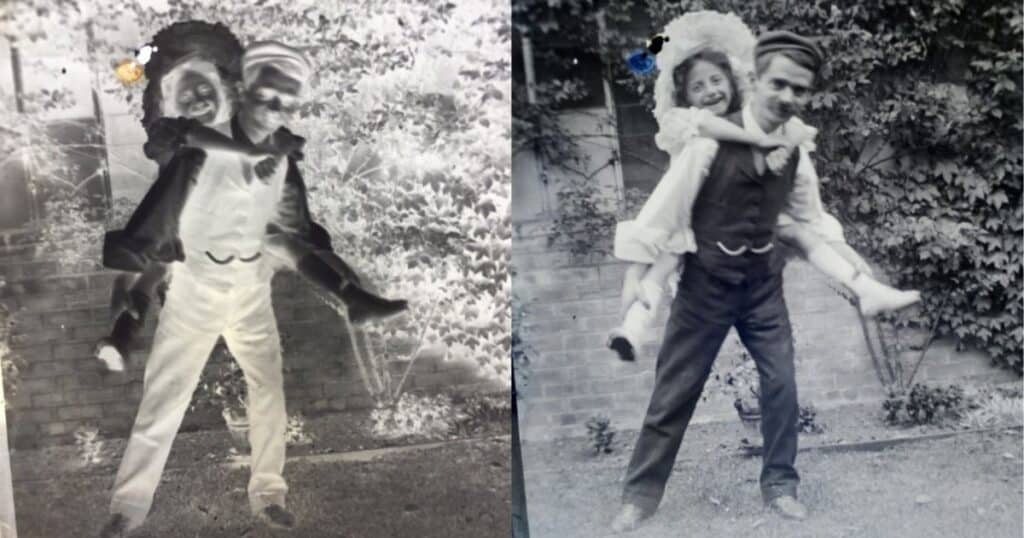Photography effects refer to the various techniques and tools employed in the art of capturing and producing images. It involves manipulating light, focus, and composition to convey specific emotions, moods, or messages. Photographers utilize a range of methods, from altering camera settings to employing post-processing software, to achieve desired visual outcomes in their images.
What Is A Negative In Photography? This question sparks curiosity, inviting us to delve into the foundational elements of photography. A negative in photography is a crucial aspect of traditional film photography.
Negative photography plays a pivotal role in the historical development of photographic processes. In film photography, the negative is the initial stage of image creation, capturing the inverted tones and colors of the scene.
Understanding Photographic Negatives
Understanding photographic negatives is essential in grasping the foundational principles of photography. A photographic negative is a reversed image captured on photosensitive material, a fundamental concept in traditional film photography. It serves as the initial step in the creation of images, portraying inverted tones and colors.
By comprehending the nuances of photographic negatives, photographers gain insight into the historical roots of the craft and the transformative journey of image-making techniques from analog to digital.
Exploring The Role Of Negatives In Photography
Exploring the role of Negatives in Photography involves delving into the foundational aspect of traditional image creation. In the analog era, a photographic negative played a pivotal role as the initial step in capturing scenes. It served as a reverse-toned template, capturing inverted colors and tones, essential for producing positive prints.
Understanding the role of negatives provides valuable insights into the historical development of photographic processes and highlights their enduring significance in the evolution of photography.
Key Elements Of A Photographic Negative
Tonal Inversion: The photographic negative showcases an inverted representation of tones and colors, capturing the scene’s opposite hues.
Emulsion Composition: Negatives are coated with a light-sensitive emulsion, a crucial element determining image quality and clarity.
Silver Halide Crystals: These microscopic crystals within the emulsion react to light exposure, forming the foundation of image formation.
Density and Contrast: The degree of darkness in the negative’s areas corresponds to the screen’s brightness, affecting the final print’s contrast.
Film Format and Size: Different film formats and sizes influence the level of detail and overall impact of the photographic negative in image reproduction.
Evolution Of Negative Techniques In Photography
The evolution of negative techniques in photography mirrors the transformative journey of the medium itself. From the early days of cumbersome glass plates to the advent of flexible film, negative techniques have undergone continual refinement. The transition to digital photography marked a seismic shift, rendering traditional film negatives less prevalent.
The enduring legacy of negative techniques persists in the artistic choices and historical context they provide to contemporary photographers. The evolution reflects both technological advancements and the profound impact of photography on visual storytelling.
Significance Of Negatives In Traditional Photography

| Key Aspects | Significance in Traditional Photography |
| Capturing Inverted Tones | Foundation for Image Reproduction |
| Chemical Development | Analog Process of Creating Photographs |
| Printing Positive Images | Essential Step in the Photographic Workflow |
| Historical Photographic Roots | Preserving the Authenticity of Image Creation |
In traditional photography, negatives play a crucial role by capturing inverted tones, serving as the foundation for image reproduction. The chemical development process associated with negatives is an integral part of the analog method of creating photographs.
Printing positive images from negatives is an essential step in the photographic workflow, contributing to the authenticity of image creation and preserving historical roots in the medium. If you are unaware of a focal point in photography you can read it also.
Transition To Digital And Its Impact On Photographic Negatives
The transition to digital photography marked a significant shift in the industry, profoundly impacting the traditional realm of photographic negatives. Digital technology replaced the need for physical film negatives, leading to the rise of electronic sensors and pixels.
This shift revolutionized the way images are captured, processed, and stored. While the era of film negatives holds historical importance, the digital transition brought about greater convenience, efficiency, and creative possibilities in the world of photography.
Creating Positives From Photographic Negatives
- Creating positives from photographic negatives is a crucial step in the traditional film photography process.
- After capturing an inverted image on photosensitive material, the negative serves as the foundation for producing positive prints.
- This transformation involves a series of chemical processes, revealing the true colors and tones of the original scene.
- The meticulous handling of the negative during this stage determines the quality and accuracy of the final positive image.
- While digital photography has become dominant, understanding the method of creating positives from negatives provides insights into the historical roots of photography.
Historical Importance Of Negatives In Photography
The historical importance of negatives in photography is profound, serving as the foundational step in the evolution of image reproduction. In the era of film photography, negatives were crucial for capturing the inverted tones and colors of a scene. They acted as templates, enabling the creation of positive prints through intricate chemical processes.
The meticulous handling of photographic negatives defined the craftsmanship of traditional photographers, highlighting their skill in both capturing and developing images. Understanding this historical significance provides a glimpse into the rich heritage of photography and its transformative journey over time.
Challenges And Advantages Of Working With Photographic Negatives

Precision in Exposure: Achieving the correct exposure is critical when working with photographic negatives, requiring a keen understanding of light and shadow to capture the desired tones accurately.
Chemical Processing Complexity: Developing negatives involves intricate chemical processes, posing a challenge in terms of expertise, time, and the need for a controlled environment.
Dynamic Range and Detail: One advantage of photographic negatives lies in their ability to retain a broad dynamic range, preserving intricate details in both highlights and shadows.
Transition to Digital Workflow: Adapting negatives to a digital workflow offers the advantage of easy manipulation and enhancement, allowing photographers to leverage modern editing tools.
Archival Longevity: Properly stored negatives can have a longer archival life compared to certain digital storage methods, providing a tangible and enduring record of photographic work.
FAQ’s
What is the primary purpose of a photographic negative?
A photographic negative serves as a template for creating positive prints, capturing the inverted tones and colors of the original scene in traditional film photography.
Can photographic negatives be easily manipulated in the digital realm?
Yes, adapting negatives to a digital workflow allows for easy manipulation and enhancement using modern editing tools, providing photographers with greater creative control.
Why is precision in exposure crucial when working with photographic negatives?
Precision in exposure is essential to accurately capture the desired tones and details in a negative, ensuring a high-quality foundation for the subsequent printing process.
Conclusion
In photography, the concept of a negative is like a silent storyteller, holding the essence of traditional image creation. From its roots in film photography to the digital era, negatives have witnessed an evolution, bridging the gap between the past and the present.
As we explore what a negative is in photography, we uncover more than a mere technicality; we discover a piece of the photographic legacy. In a world now dominated by digital pixels, the negative stands as a tangible reminder of the craft’s origins, showcasing the ingenuity and creativity that have shaped the art of photography over time.
